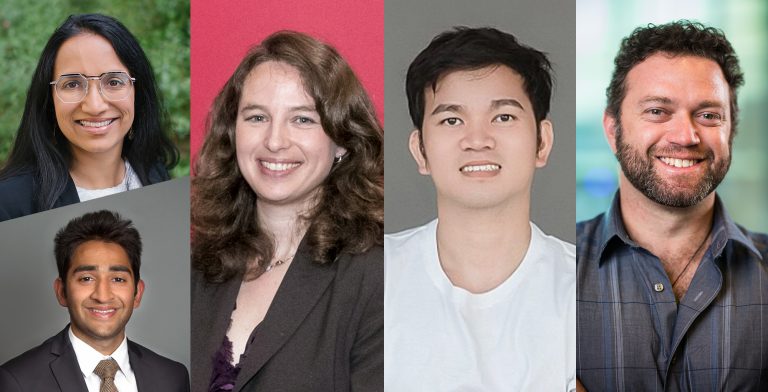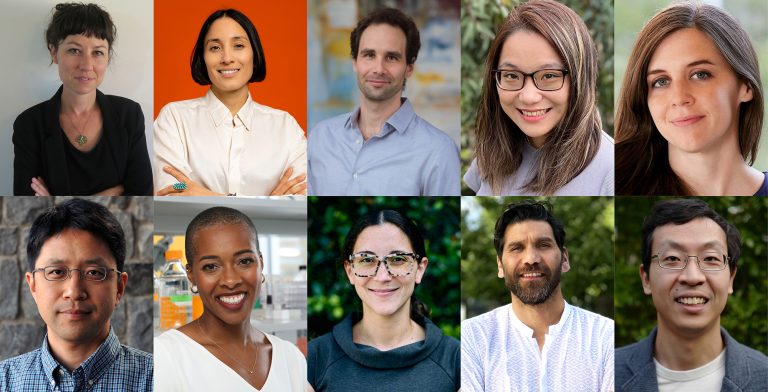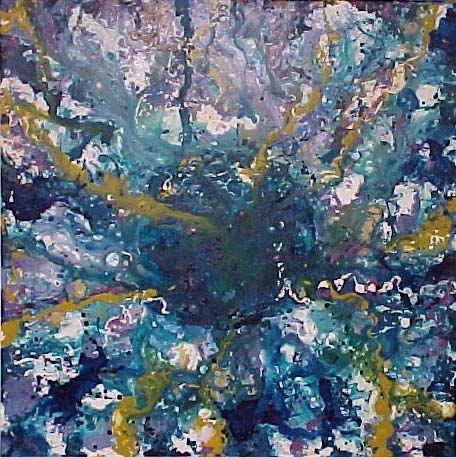July 20, 2020
The McKnight Endowment Fund for Neuroscience (MEFN) announced the three recipients of $600,000 in grant funding through the 2020 McKnight Technological Innovations in Neuroscience Awards, recognizing these projects for their ability to fundamentally change the way neuroscience research is conducted. Each of the projects will receive a total of $200,000 over the next two years, advancing the development of these groundbreaking technologies used to map, monitor, and model brain function. The 2020 awardees are:
- Eva Dyer, Ph.D., of the Georgia Institute of Technology & Emory University, who is creating machine learning algorithms to compare large datasets of neural activity and find both macro- and neuron-level patterns that correspond to specific states and behaviors in freely-behaving animals.
- Rikky Muller, Ph.D., of the University of California – Berkeley, who is designing and building a high-speed holographic projector that can project 3D light into the brain at neural speeds, many times faster than current projectors, and so manipulate thousands of optogenetically-controlled neurons with high precision.
- Kai Zinn, Ph.D., of the California Institute of Technology, who is developing a modular, cost-effective means of genetically barcoding proteins such as antibodies and neural cell surface receptors so researchers can track protein interactions using high-throughput single-cell sequencing, a tool with many possible applications for neuroscience research.
(Learn more about each of these research projects below.)
About the Technological Innovations in Neuroscience Awards
Since the McKnight Technological Innovations in Neuroscience Award was established in 1999, the MEFN has contributed more than $14.5 million to innovative technologies for neuroscience through this award mechanism. The MEFN is especially interested in work that takes new and novel approaches to advancing the ability to manipulate and analyze brain function. Technologies developed with McKnight support must ultimately be made available to other scientists.
“Again, it has been a thrill to see the ingenuity that our applicants are bringing to new neurotechnologies,” said Markus Meister, Ph.D., chair of the awards committee and the Anne P. and Benjamin F. Biaggini professor of biological sciences at Caltech. “This year, we faced a tough choice among many exciting developments, and our awards span a broad range, from computational methods for big data from the brain, to fancy optics for the control of light beams, to a clever molecular strategy for surveying protein expression in neurons.”
This year’s selection committee also included Adrienne Fairhall, Timothy Holy, Loren Looger, Mala Murthy, Alice Ting, and Hongkui Zeng, who chose this year’s Technological Innovations in Neuroscience Awards from a highly competitive pool of 89 applicants.
Letters of intent for the 2021 Technological Innovations in Neuroscience Awards are due Monday, December 7, 2020. An announcement about the 2021 process will go out in September. For more information about the awards, please visit www.mcknight.org/programs/the-mcknight-endowment-fund-for-neuroscience/technology-awards
2020 McKnight Technological Innovations in Neuroscience Awards
Eva Dyer, Ph.D., Assistant Professor, Wallace H. Coulter Department of Biomedical Engineering, Georgia Institute of Technology & Emory University
“Comparing Large-Scale Neural Datasets Across Time, Space, and Behavior”
The ability to observe and record neural data over large parts of the brain has resulted in enormous amounts of data, making it possible to find patterns in the data that can explain how many neurons work together to encode information about the world. Even with new advances in finding low-dimensional patterns in datasets, it is still challenging to compare multiple large-scale recordings, whether it be over long periods of time, or across different individuals solving the same or similar tasks, or across disease states. Dr. Dyer’s experience using machine learning (ML) to decode brain activity has led her to a novel solution to identify patterns in multiple large neural datasets.
Dr. Dyer’s work involves creating machine learning algorithms to extract meaningful information from neural datasets, which are labelled to identify whether the animal was asleep, awake, foraging, or engaging in various motions or behaviors. New cryptography-inspired mathematical rules guide the algorithms to identify similar patterns in separate data sets, looking specifically to match the neural activity generated by different brain states as a starting point for bringing the data into alignment. Aligning neural activity can show how neural patterns are related to the behavior and state of the subject as well as prevent corruption by noise, and provides a critical stepping-stone for more powerful analysis techniques.
Dr. Dyer’s second aim will help researchers refocus on single neurons to understand how they contribute to the overall changes in neural activity, and whether they can be used to predict specific brain states. The research will further explore whether differences in behaviors can be traced back to specific cell types, and how the differences seen across datasets can be used to characterize variation across individual animals. The ability to decode and compare large neural datasets will prove invaluable in neurological research by indicating how neurodegenerative disease affects the brain’s processing of information.
Rikky Muller, Ph.D., Assistant Professor of Electrical Engineering and Computer Sciences, University of California – Berkeley
“A High-Speed Holographic Device for Optogenetic Control of Thousands of Neurons”
Optogenetics – genetically modifying neurons to be light-sensitive so researchers can activate or silence them at will – has revolutionized neuroscience research. Paired with spatial light modulators that shape light into 3D holograms, researchers can individually control many neurons distributed throughout a three-dimensional region of a brain in vivo. But until now, there has not been a holographic projector able to control neurons at the speeds found in the brain naturally.
Dr. Muller is designing and building a holographic projector to solve this issue. Her device will stream holographic light images at rates of 10,000 frames per second (Hz). Many current-generation TVs refresh 60 frames per second, for comparison, and the fastest commercially available holographic tools top out at 500 Hz. This high refresh rate is necessary to replicate natural neural signaling, which involves action potential times of about 1/1,000th of a second (equivalent to 1,000 Hz when considering refresh rates.) Additionally, Muller aims to target thousands of neurons with pinpoint accuracy, and just as higher rates in TVs result in sharper images, a 10,000 Hz hologram will offer greater precision.
Dr. Muller, an electrical engineer who focuses on neurotechnology, regularly consults with neuroscientists as she designs, tests, and builds the device to ensure it serves their needs. The device will use a micromirror array, which will sculpt 3D patterns of light to specific locations and depths through the electrical actuation of miniature mirrors; the light is then relayed through a series of lenses. The project will first design and fabricate two arrays – a smaller array for testing and proof of concept, and a larger format array, along with the associated drivers and controls that will be used for measurement and calibration. Finally, Dr. Muller’s team will produce a full-featured spatial light modulator. It is hoped that this tool will give researchers unprecedented ability to control and test neural connectivity.
Kai Zinn, Ph.D., Howard and Gwen Laurie Smits Professor of Biology, California Institute of Technology
“Modular Enzymatic Barcoding”
Many neuroscience experiments involve the analysis of antibody and receptor binding to cell surfaces. Also, an understanding of neural development and function requires knowledge about in vivo interactions among cell surface proteins. High-throughput experiments involving proteins are usually time-consuming and complex since every protein has different biochemical properties. To help open new opportunities for neuroscience research, Dr. Zinn and his team are developing a modular way to “barcode” different proteins, providing researchers with a flexible toolkit.
Barcoding in its simplest form involves inserting a genetic marker into molecules and then seeking out those markers after the experiment to determine which molecules are localized together. It has been used with nucleic acids with great success. Proteins are more complex, however, and there was no way to barcode the thousands of proteins of interest to researchers without resorting to chemical crosslinking, which often alters protein function. Dr. Zinn is overcoming this challenge with the use of fusion proteins containing high-affinity protein binding modules attached to “HUH-domain” enzymes, which can covalently couple themselves to barcode oligonucleotides. The binding modules allow the barcodes to be attached to antibodies, biotinylated proteins, and proteins with covalent binding tags. This provides access to most of the proteins of interest to neuroscientists. The project also involves building nanoparticle scaffolds with 60 binding points that can be simultaneously attached to barcodes and to proteins of interest. These scaffolds will enhance the observability of interactions – weak interactions are made stronger when multiple proteins on each structure interact.
Dr. Zinn’s project will entail developing the protocols and processes involved in conducting several types of high-throughput single-cell sequencing experiments that will provide information on proteins. These include experiments using barcoded antibodies to observe the expression of specific surface receptors on a cell, to observe changes to cells when exposed to certain proteins, to visualize large numbers of antigens in brain tissue, to screen interactions of large numbers of proteins, and to identify receptors for “orphan” proteins. Thanks to its modularity, simplicity, and the ability to allow multiple proteins to interact at once, Dr. Zinn expects his barcoding system will enable and accelerate these and many other types of neuroscience experiments.


